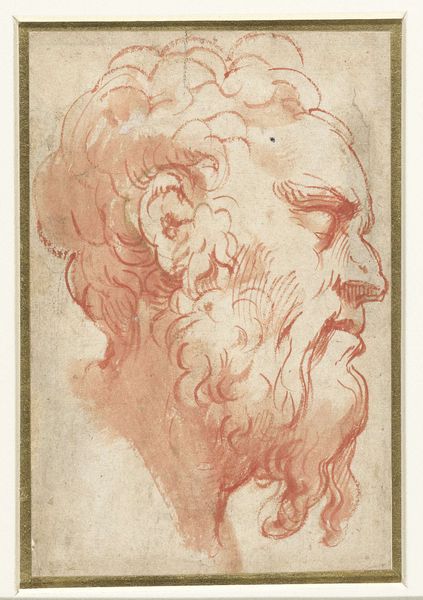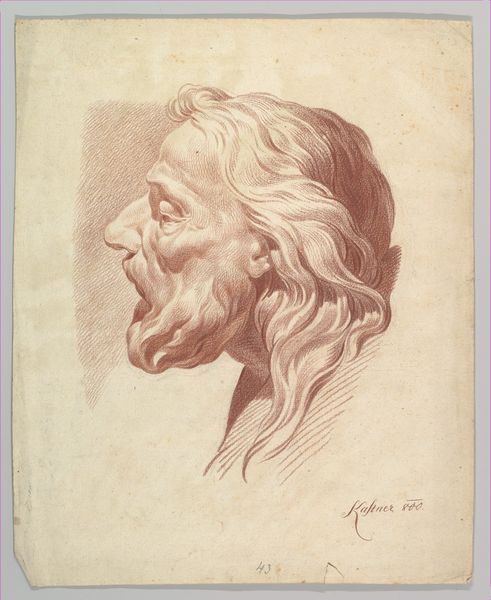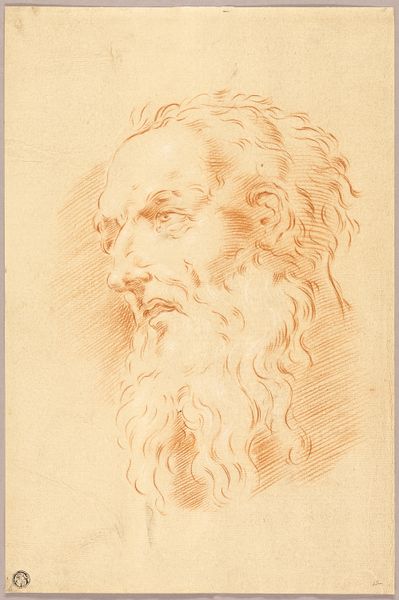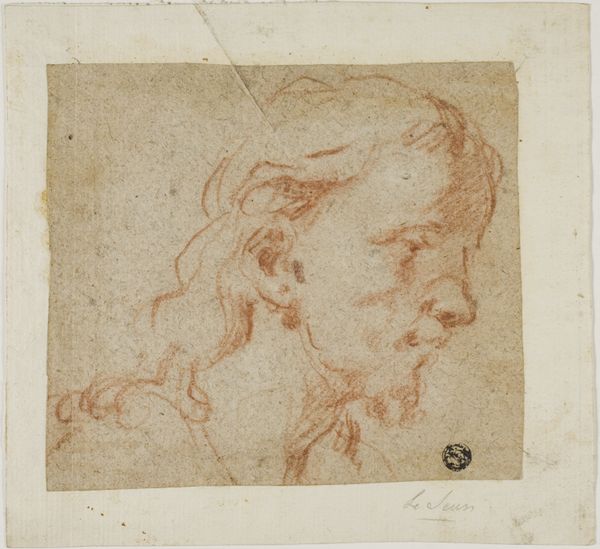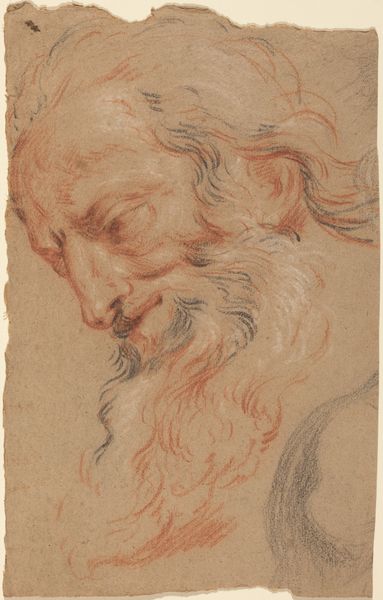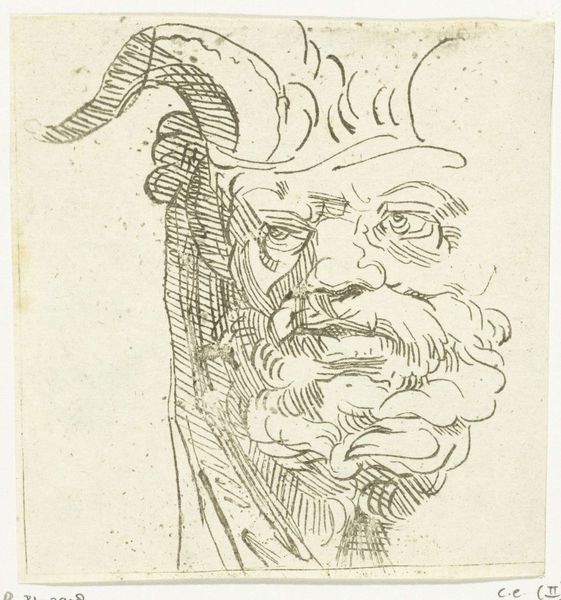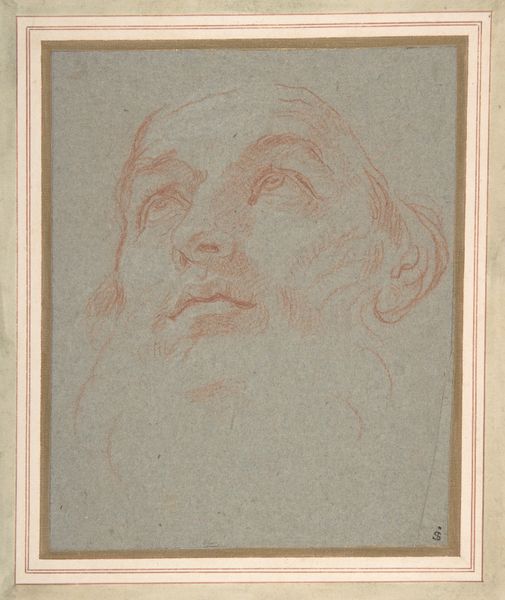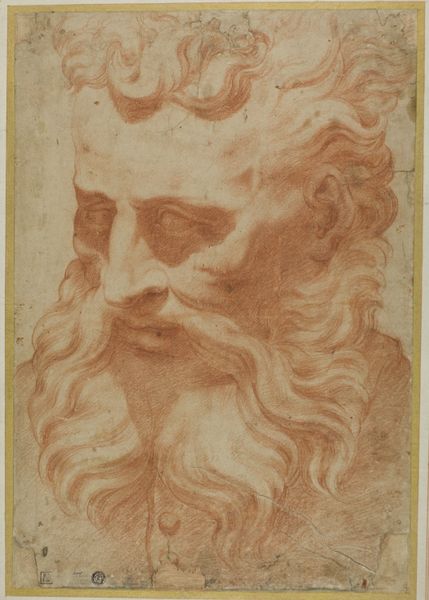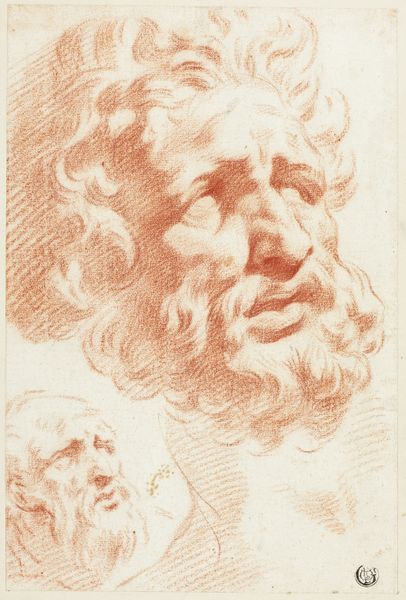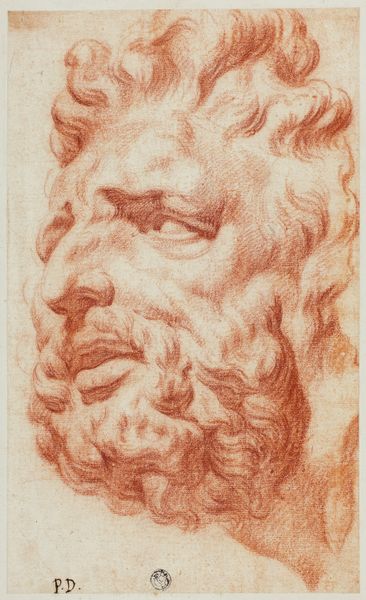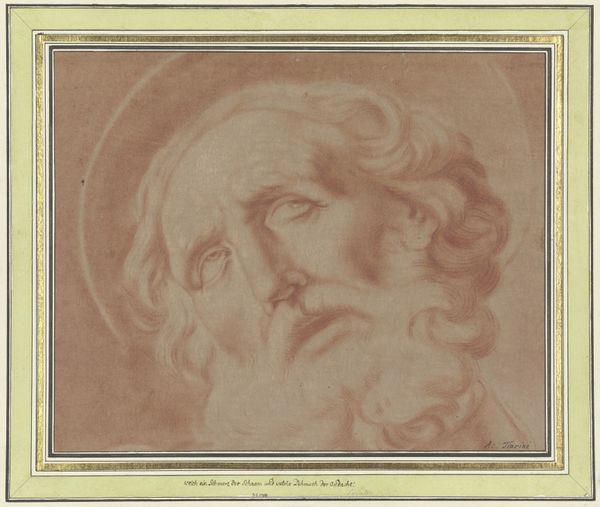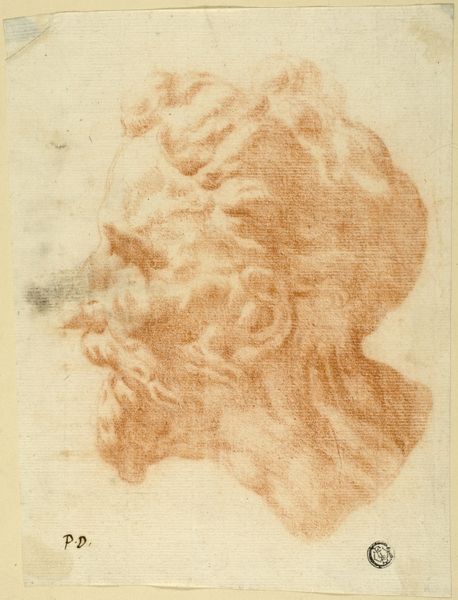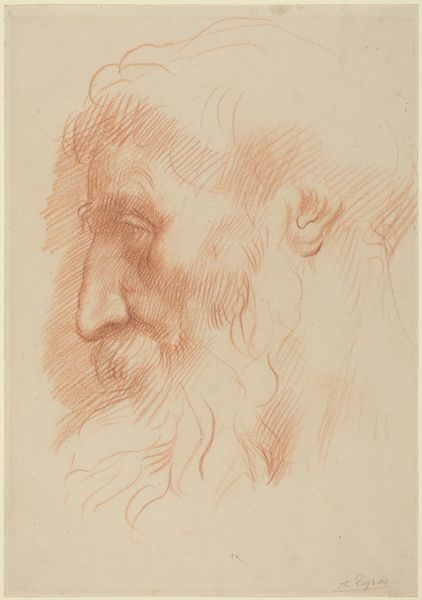
drawing
#
portrait
#
drawing
#
11_renaissance
Dimensions: Sheet: 4 in. × 3 3/16 in. (10.2 × 8.1 cm)
Copyright: Public Domain
Curator: Welcome. Let's explore this red chalk drawing titled "Study of Bearded Man," created between 1575 and 1605 by Camillo Procaccini. You can currently find it at the Metropolitan Museum of Art. What are your initial thoughts? Editor: A distinct feeling of solemnity, almost of weariness, emanates from this sketch. The subject's eyes are downcast, framed by those incredibly rendered curls. It feels both classical and intimate. Curator: Yes, that sense of intimacy is powerful. We have this Renaissance-era drawing capturing, perhaps, a philosopher or religious figure. The artistic conventions of the period certainly imbued such images with a certain symbolic weight. Editor: Absolutely. Notice the color? The sanguine hue emphasizes the subject's humanity—the warmth of his blood, the flush of his skin. I can’t help but think of the color's association with passion, sacrifice. Perhaps, even a premonition. Curator: That’s an interesting reading. Considering this was a period of intense religious and political upheaval, your point makes sense. Red chalk drawings like this were common for preparatory sketches; thus, a medium with an historical legacy of process is very interesting when examining the completed product. It begs the questions of utility and function; and the role this 'sketch' plays. Editor: True, that adds a layer. The "Study" title is direct. So what stories might this portrait have hinted at to its contemporary audience, versus what it suggests to us now, observing it through our modern lens? Does the "bearded man" represent collective experiences with power? Curator: It very well could. Looking closely, the very fine lines forming the hair and beard might recall similar depictions found in antiquity. We might be encouraged to look for common visual markers between the biblical and historical past, to see a commentary on the crises within that era. Editor: So, in a way, we’re decoding layers of cultural memory through Procaccini’s symbols? And by re-contextualizing a certain type, the figure, this 'study' also provides commentary on identity. Curator: Exactly! It allows us to look at identity—male identity particularly—through historical lenses that can unveil nuances of that era, and reflect our modern world, too. Editor: That makes this small drawing a significant object for our gallery visit. The intensity within the expression becomes a timeless touchstone. Curator: I agree. It's a reminder that our understanding of images constantly shifts, deepening with historical awareness.
Comments
No comments
Be the first to comment and join the conversation on the ultimate creative platform.
